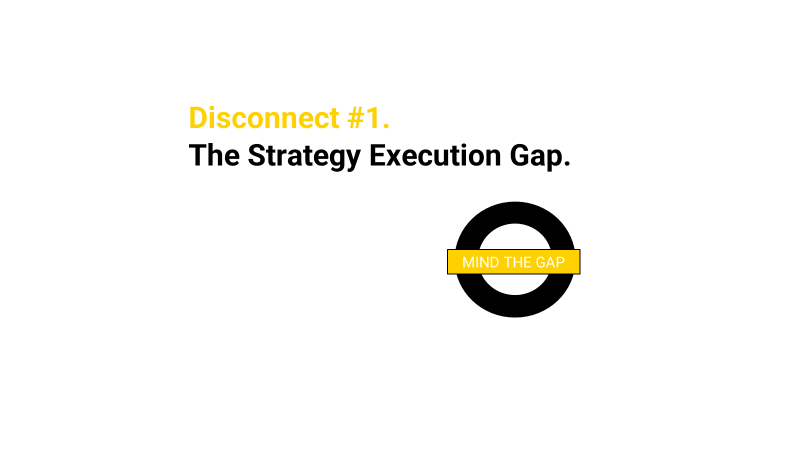Disconnect #1. The Strategy Execution Gap.
During a phase of hypergrowth, ClimateTech companies face the choice to “grow or go.” They must prioritize scalability and efficient growth through strategic vision, execution, and adaptability to make a significant impact in the industry.

“90% of strategic plans get never fully implemented.”
The disconnect between strategy and daily execution is a longstanding challenge for many companies, and it becomes even more critical in the context of ClimateTech firms. The statistic that 90% of strategic plans never get fully implemented highlights the difficulties companies face in translating their strategic visions into actionable and effective execution.
The strategy execution gap refers to the challenge many organizations face when trying to effectively implement and execute their strategic plans. It occurs when there is a misalignment between the strategic goals and objectives of an organization and the actual actions and outcomes on the ground.
Understanding the Root Causes for Business Challenges
The operating model of an organization plays a crucial role in strategy execution and can be seen as the origin of many challenges related to the strategy execution gap. The operating model encompasses the structures, processes, capabilities, and culture of the organization, and it defines how work is carried out to achieve the desired strategic goals.
Here’s how the operating model influences strategy execution and contributes to the strategy execution gap:
- Structures: The organizational structure, including departments, teams, and reporting lines, can impact strategy execution. If the structure is too rigid or siloed, it may hinder collaboration and coordination necessary for effective execution.
- Processes: The operational processes and workflows within an organization should support the execution of the strategy. Inefficient or outdated processes can slow down execution or create bottlenecks.
- Capabilities: The capabilities of the organization, including the skills, expertise, and resources available, are critical for strategy execution. Gaps in capabilities, such as lacking the necessary skills or insufficient resources, can impede successful execution.
- Culture: The organizational culture, comprising shared values, beliefs, and behaviors, significantly influences strategy execution. A culture that fosters innovation, collaboration, and accountability is more likely to support successful execution, while a resistant or stagnant culture can hinder progress.
- Leadership: Effective leadership is essential for strategy execution. Leaders set the tone, communicate the strategy, and align the organization. Inadequate leadership, lack of clarity, or inconsistent direction can contribute to the strategy execution gap.
- Performance management: The performance management system should align with the strategy and provide mechanisms for monitoring and measuring progress. If performance metrics and incentives are not aligned with strategic objectives, it can create a gap between desired outcomes and actual performance.
- Communication: Clear and effective communication throughout the organization is crucial for strategy execution. Miscommunication, lack of understanding, or insufficient communication channels can lead to misalignment and gaps in execution.
- Agility and adaptability: In a rapidly changing business environment, the ability to adapt and respond to new challenges is crucial for strategy execution. Organizations with rigid or inflexible operating models may struggle to adjust their execution approach, leading to a gap between strategy and implementation.
Grasp the cause by the scruff - The Target Operating Model.
By assessing and optimizing the operating model, organizations can address the root causes of the strategy execution gap. This involves aligning structures, processes, capabilities, culture, leadership, and performance management to better support the strategic objectives. A well-designed operating model enhances the organization’s ability to execute its strategy effectively and achieve its goals.


